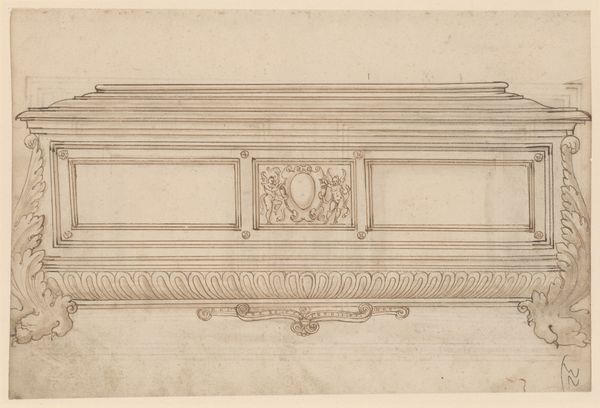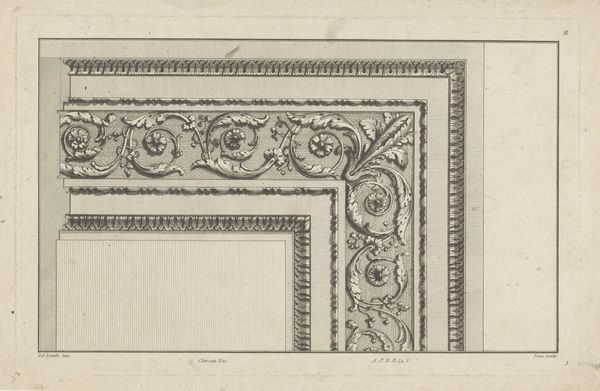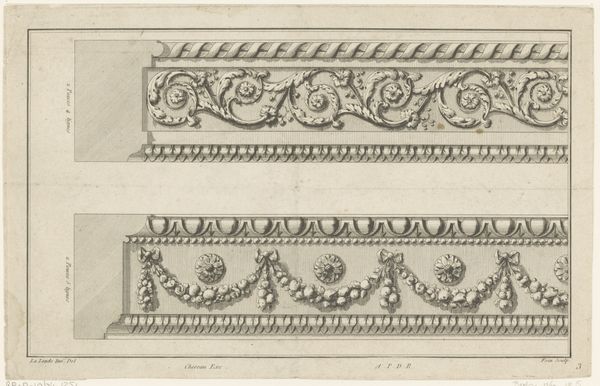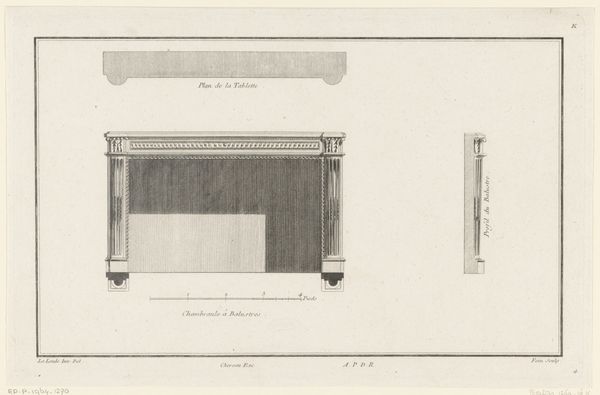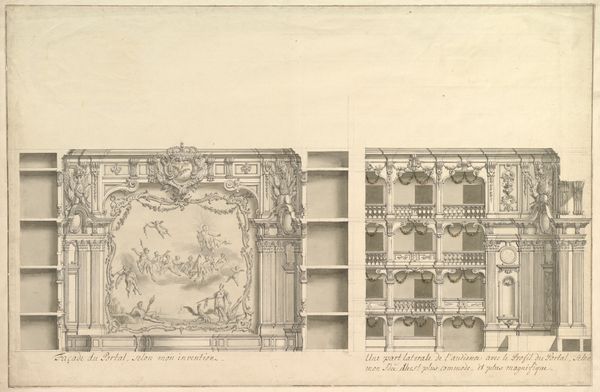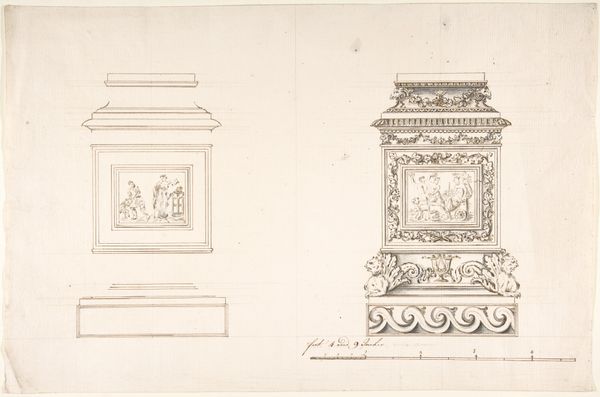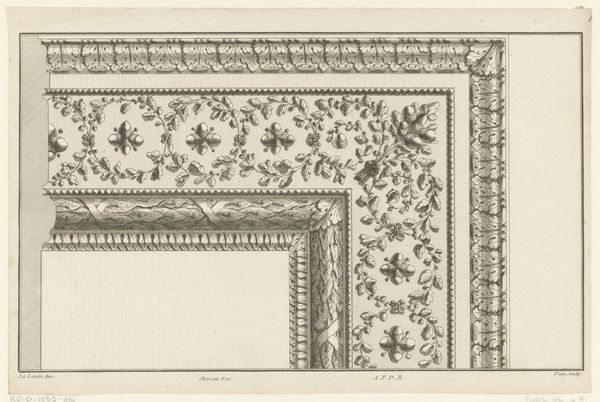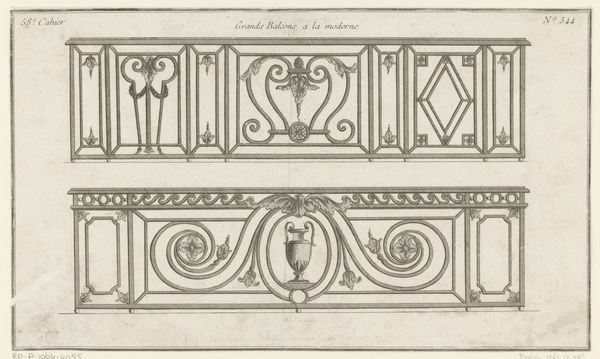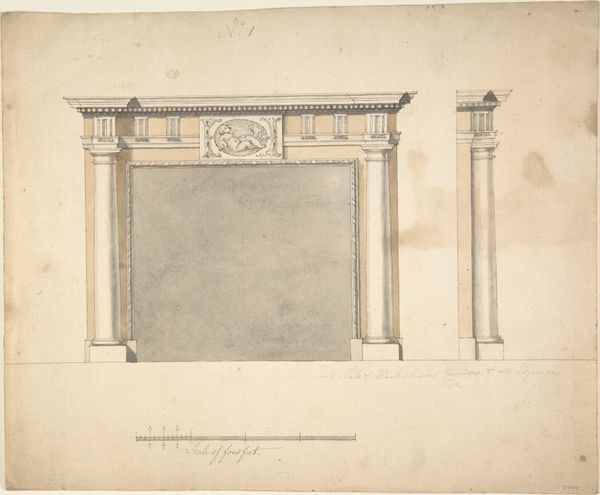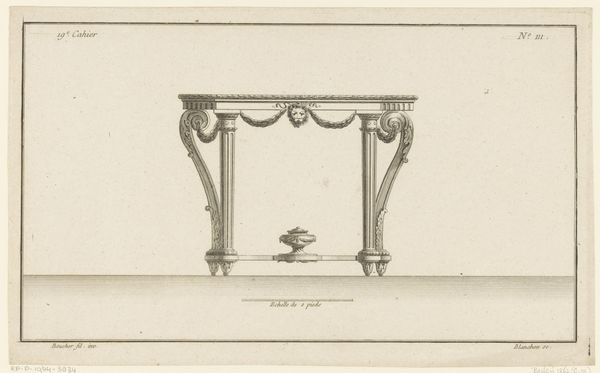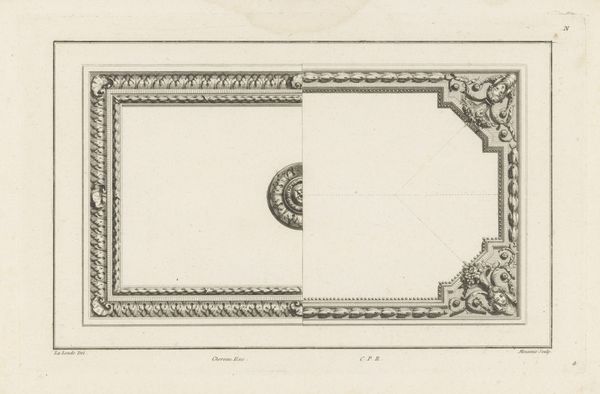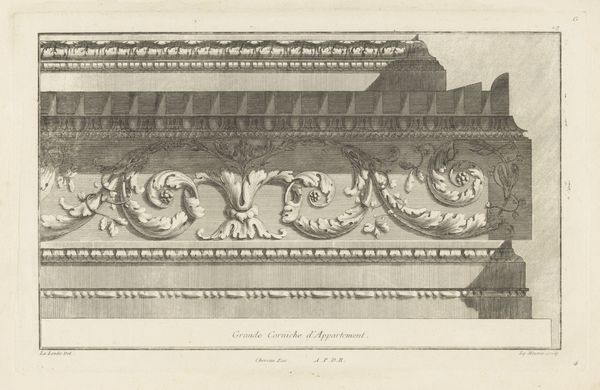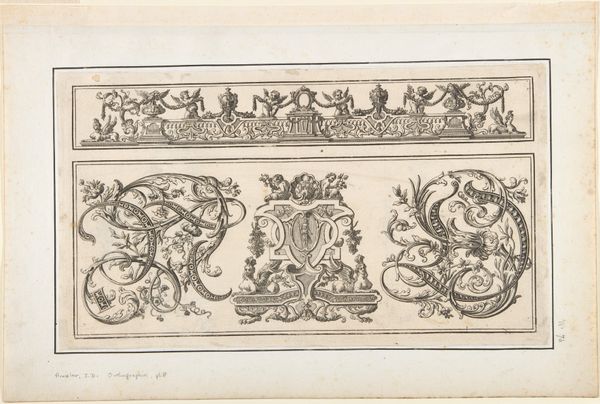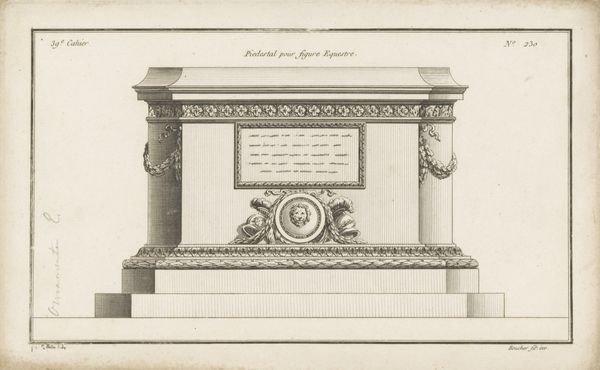
drawing, print, paper, engraving, architecture
#
drawing
#
neoclacissism
# print
#
paper
#
engraving
#
architecture
Dimensions: height 224 mm, width 337 mm
Copyright: Rijks Museum: Open Domain
This detailed design for a ‘Deurlijst,’ or doorframe, was made by C. Le Meunnié, using etching. This is a printmaking process with a long history of reproducing architectural designs. Notice the crisp, precise lines. These were achieved by coating a metal plate with wax, drawing through it with a sharp needle, and then submerging the plate in acid, which bites into the exposed metal. The plate is then inked and printed. The appeal of this process to architects is clear: it allows for the mass production of detailed designs, and for the distribution of aesthetic ideas. But it also speaks to social divides. The elaborate ornamentation seen here, rendered through skilled handwork, would have been reserved for wealthy patrons. The print makes the design more widely available, but the doorframe itself would have remained an exclusive commodity, symbolizing status and power. Understanding the artistic and industrial processes behind even a simple image like this, helps us to consider its wider cultural and economic significance.
Comments
No comments
Be the first to comment and join the conversation on the ultimate creative platform.
